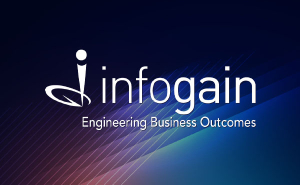- Posted on : June 22, 2022
-
- Industry : Corporate
- Service : Data & Insights
- Type: Blog

There’s a knowledge gap in today’s workplace: the gap between the data organizations have and the insights they get from it. Various kinds of data architectures are being used to combat this problem. But the situation is complicated by the fact that many legacy systems and processes are designed to silo data – or at least designed to work with data that’s already in a silo. As completely redoing these systems is prohibitively expensive, interruptive, and time-consuming, companies are searching for ways to make this information more accessible. And one way is by using a data fabric.
What Is Data Fabric?
Let’s consider IBM’s definition of data fabric: “A data fabric is an architectural approach to simplify data access in an organization to facilitate self-service data consumption.” The definition goes on to say that a data fabric is environment-, process-, and utility-agnostic and that it includes end-to-end management and automated data discovery, governance, and consumption.
In other words, a data fabric allows organizations to orchestrate and use data that’s stored in various locations throughout the company, including hybrid and multi-Cloud environments. Data can be located in various departments and even in diverse geographic regions; it can be in various forms and be collected from numerous sources. None of this should be a barrier to the data’s use and consumption wherever it’s needed.
Data fabric is all about making data easier – to use, access, monitor, and govern. Thus, a data fabric would include integration (i.e., data virtualization, APIs, etc.), management, and delivery processes, all of which are handled or at least monitored by Artificial Intelligence and automation. The end goal is to support business data used in applications, analytics, and business process automation while reducing some of the workloads on overstretched IT and data teams.
The Benefits of Data Fabric
Data fabrics’ main benefits are two-fold: It simplifies data access and automates various parts of the data management process. Let’s look at how its various benefits can be applied in the business world.
Simpler data access means more self-service for business users:
To allow business users to access and use data without the direct intervention of IT support or data services has become many a company’s goal. Not only does this streamline the entire process, it also helps businesses make decisions faster. And because a data fabric can work across diverse sources and locations, users can also access and combine different data types from disparate sources.
Reduced inefficiencies mean improved performance and productivity:
Data fabric is an approach, not a product. It works across tools and environments of all kinds to ensure that data can be accessed and combined. It reduces the bottlenecks associated with delivery data.
Streamlining maintenance and automating routine work reduces costs:
According to Gartner, data fabric reduces integration design and deployment by 30% and maintenance by 70 percent. It can leverage existing data storage and processing solutions while also making room for new concepts. It can also reduce the need for manually integrating new tools. Both of these improve cost and operational efficiency. Furthermore, it’s estimated that data scientists spend 45% of their time loading and cleaning data. Automating this task increases their productivity and frees them to do more interesting and valuable things with their expertise.
Automation makes data processing and governance easier:
Using automation to discover, monitor, and consume data reduces costs as explained above. More importantly, it makes implementing organization-wide data governance policies more feasible. This is because data governance policies can be built into the data fabric itself, which increases confidence in the quality of the data and also provides more trusted outcomes.
The Case for Data Fabrics
From the very start, the goal of data analysis – and later data analytics, Big Data, business AI, and all its various tools – has been to provide useful insights to decision-makers. The various tools in common use today are making that process faster, smarter, and more efficient. Utilizing a data fabric architecture has the potential to optimize using, sharing, and delivering data even more – without requiring a specific platform, data storage technology, or set of tools.








